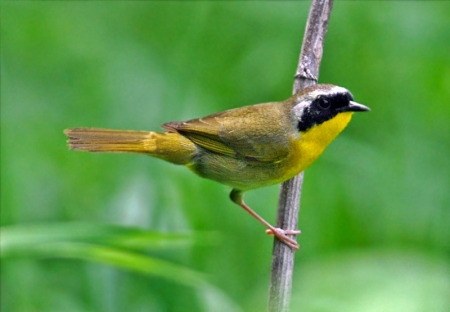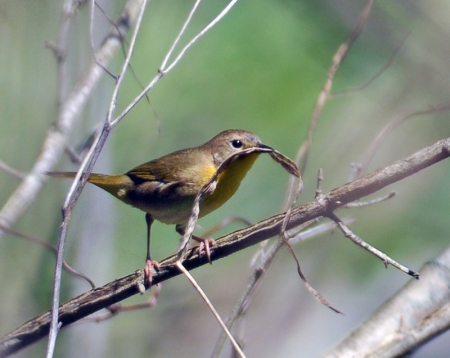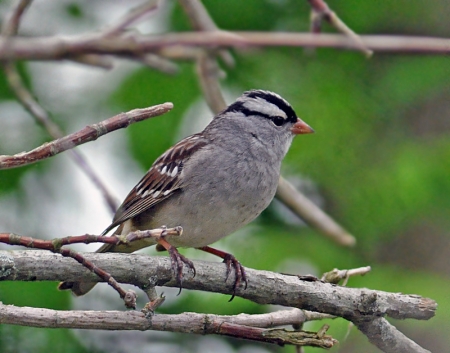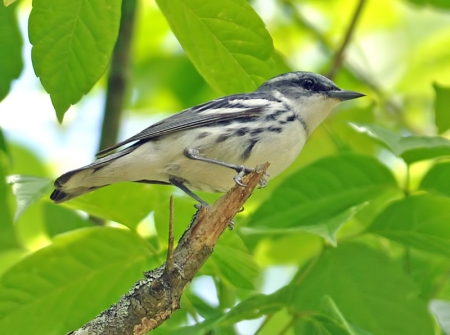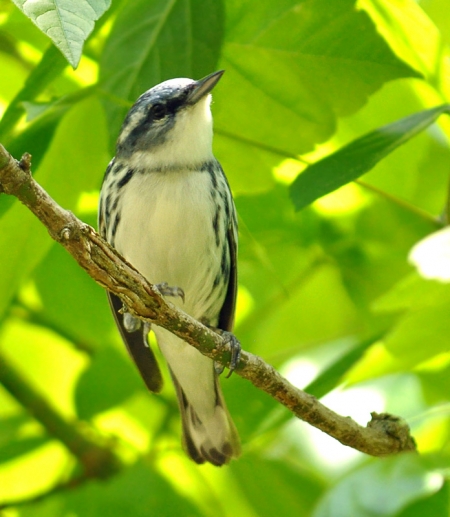I had some comp time that was about to expire and my personal odometer was going to roll over another year, so I took off work the week of May 6th. The extended forecast on Friday didn’t look good: a chance of rain and thunderstorms projected for every single day I didn’t have to work. The first two days, Saturday and Sunday, were complete wash-outs with rain and dark, overcast skies both days. But then the clouds magically broke up and the rest of the week was pretty damn nice.
I spent seven consecutive days chasing birds and not doing much else. There were day trips to Coon Island and Caney Mountain Conservation Areas, but mainly I stayed close to home—there’s plenty to see here. I took approximately six thousand photos, including some very nice ones, and I’ll be mining those for posts in the coming days, starting now.
South of Big Spring on the Current River, there are areas of large, fairly extensive canebrakes. Some of these are home to Swainson’s Warblers and I spent several hours on May 8th combing those canebrakes. The Swainson’s is considered Endangered in Missouri and not an easy bird to find. I had seen one earlier in the year, an out of habitat bird that was likely a just-arrived migrant. That sighting lasted about two seconds, offering no opportunity for a photo which was my goal on this day. Unfortunately , not a Swainson’s was to be found and other than a few decent photos of a pair of Common Yellowthroats including a female carrying nesting material, I was striking out on that end as well.
I almost headed home at this point, but finally decided to drive on down to the NPS campground at Big Tree. The area is usually good for Northern Parulas and American Redstarts along a large slough and Blue-winged Warblers in the campground. The only Hooded Warbler I’ve ever seen was in the river bottom downstream from the slough and even though that was twenty years ago, I irrationally have to check the area each year just to be sure that there’s not another one around.
There’s a mud dam across the lower end of the slough and the road crosses the stream that seeps through. Not far past this and before entering the campground proper, I stopped to try to photograph a small flock of White-crowned Sparrows.
I managed a photo or three, but it was a song from the trees that really caught my attention. I didn’t recognize it, but was sure it was a warbler. It took forever to find the singer and even then I still couldn’t tell what he was. I don’t usually carry binoculars along with the camera/long lens combo, so I shot a few photos of him high in a tree and tried to make an ID by zooming in on the not-so-great images on the camera’s LCD. I could see it was a warbler and it appeared to be black and white streaked, but not a Black-and-White Warbler because the pattern was wrong.
This time of year, many species are possible passing through on migration, so I was running all the possibilities through my head when it finally clicked: Cerulean Warbler. Now that I had a clue what I was looking at, I grabbed my phone, listened to the Cerulean’s song and immediately confirmed the birds identity.
Well, the bird heard the song playing too and came screaming down out of the tree tops to see where his potential rival was.
I turned the playback off and he soon went back to feeding in the box elders along the road, but at a lower height than before. This provided a much better opportunity for photographing him and I followed him for the next ten minutes, shooting another couple hundred images.
This particular bird was darker than the Ceruleans I’ve seen in the past. They’re usually more blue/less black and that’s what was giving me a hard time making the ID. That “necklace” around his neck is a diagnostic field mark—had I been able to see that in the first few photos on the camera’s screen, I probably would have made a correct ID immediately.
If I couldn’t find a Swainson’s Warbler, this was a nice consolation prize. The Cerulean Warbler population has declined at 3-4% per year at least since 1966. This decline is the result of habitat destruction and fragmentation on both the breeding and wintering range. A 1995 population estimate of 560,000 extrapolates to about 400,00 in 2006, the year that the US Fish & Wildlife Service declined listing the warbler as an endangered species.
The Current River (particularly the upper reaches) along with the neighboring Eleven Point River basin have been identified as among the key areas where the largest remaining concentrations of Cerulean Warblers still occur. Not surprisingly, both of these rivers are federally protected over much of their length and both have extensive tracts of those mature sycamore forests that are so important for Ceruleans.
I showed these photos to the park’s terrestrial ecologist and I think I’ve now been “drafted” into participating in kayak surveys looking for Ceruleans. Please, don’t throw me in that briar patch!
References:
BirdLife International 2012. Dendroica cerulea. In: IUCN 2012. IUCN Red List of Threatened Species. Version 2012.2. . Downloaded on 17 May 2013.
BirdLife International 2012. Limnothlypis swainsonii. In: IUCN 2012. IUCN Red List of Threatened Species. Version 2012.2. . Downloaded on 17 May 2013.
Link, W. A., & Sauer, J. R. 2002. A hierarchical analysis of population change with application to Cerulean Warblers. Ecology, 83(10), 2832-2840.
National Audubon Society. 2013. Audubon Watchlist – Cerulean Warbler. Accessed 18 May 2013.
Rohrbaugh, R. W.; Barker, S. E.; Rosenberg, K. V. 2001. Little Blue Warblers. Birdscope 15: 1-3.
Rosenberg, K. V., Barker, S. E., & Rohrbaugh, R. W. 2000. An atlas of Cerulean Warbler populations. Cornell Laboratory of Ornithology, Ithaca, New York, New York, USA.
United States Fish and Wildlife Service. 2006. US Fish and Wildlife Service finds Cerulean Warbler not warranted for Endangered Species Act Listing.
